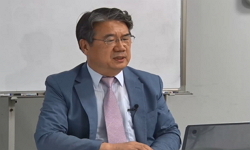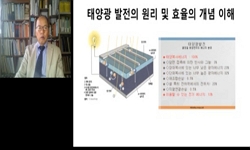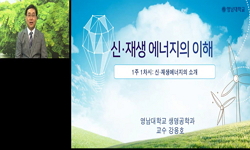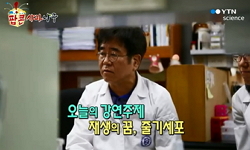본 연구에서는 polysulfone과 Escherichia coli biomass의 현탁액을 방사하여 입상화한 PS-E. coli biomass composite fiber(PSBF)와 PSBF에 존재하는 아민기를 메틸화시킨 amine-methylated PSBF (AM-PSBF)를 제조하였다. PSB...
http://chineseinput.net/에서 pinyin(병음)방식으로 중국어를 변환할 수 있습니다.
변환된 중국어를 복사하여 사용하시면 됩니다.
- 中文 을 입력하시려면 zhongwen을 입력하시고 space를누르시면됩니다.
- 北京 을 입력하시려면 beijing을 입력하시고 space를 누르시면 됩니다.
https://www.riss.kr/link?id=A101087591
- 저자
- 발행기관
- 학술지명
- 권호사항
-
발행연도
2015
-
작성언어
Korean
-
주제어
염기성 염료 ; 흡착 ; 발효폐기물 ; 대장균 ; 재생 ; Basic dye ; Adsorption ; Fermentation waste ; Escherichia coli ; Recycling
-
등재정보
KCI등재
-
자료형태
학술저널
- 발행기관 URL
-
수록면
164-170(7쪽)
-
KCI 피인용횟수
0
- DOI식별코드
- 제공처
-
0
상세조회 -
0
다운로드
부가정보
국문 초록 (Abstract)
본 연구에서는 polysulfone과 Escherichia coli biomass의 현탁액을 방사하여 입상화한 PS-E. coli biomass composite fiber(PSBF)와 PSBF에 존재하는 아민기를 메틸화시킨 amine-methylated PSBF (AM-PSBF)를 제조하였다. PSBF와 AM-PSBF에 의한 염기성 염료 Basic Blue 3 (BB3)의 흡착특성을 비교함으로써 아민기의 메틸화가 BB3의 흡착에 미치는 영향을 확인하였다. pH edge 실험에서는 두 흡착제 모두 pH가 증가할수록 BB3 흡착량이 증가하는 경향을 보였고, 동일 pH에서 AM-PSBF가 PSBF보다 높은 흡착량을 나타내었다. PSBF와 AM-PSBF 모두 흡착평형은 5시간 이내에 도달하였으며, 흡착속도론 실험데이터는 유사 1차 속도 모델식으로 잘 묘사되었다. 그리고 Langmuir 모델에 따르면, pH 8에서 AM-PSBF의 최대흡착량은 28.9 ㎎/g로 PSBF의 최대흡착량인 20.7 ㎎/g보다 약 1.4배 증가하였다. 이 결과로부터 PSBF에서 아민기의 메틸화는 염기성 염료의 흡착을 향상시키는 효과가 있음을 알 수 있다. 또한, 탈착실험 결과는 AM-PSBF가 반복적으로 재사용 될 수 있음을 보여주었다.
다국어 초록 (Multilingual Abstract)
In this study, polysulfone-Escherichia coli biomass composite fiber (PSBF) was prepared by spinning the suspension of PS and E. coli biomass and amine-methylated PSBF (AM-PSBF) was fabricated through the methylation of amine groups in PSBF. As compari...
In this study, polysulfone-Escherichia coli biomass composite fiber (PSBF) was prepared by spinning the suspension of PS and E. coli biomass and amine-methylated PSBF (AM-PSBF) was fabricated through the methylation of amine groups in PSBF. As comparing the adsorption characteristics of basic dye, Basic Blue 3 (BB3) by the PSBF and AM-PSBF, the effect of the methylation of amine groups on BB3 adsorption was confirmed. pH edge experiments showed that the BB3 uptake of PSBF and AM-PSBF increased as pH was increased and the BB3 uptake of AM-PSBF was higher than that of PSBF at the same pH. Both of PSBF and AM-PSBF was reached at equilibrium within 5 h and kinetic experimental data were well fitted by the pseudo-firstorder kinetic model. By the Langmuir model, the maximum adsorption capacities of PSBF and AM-PSBF at pH 8 were evaluated to be 28.9 and 20.7 ㎎/g, respectively. The maximum adsorption capacity of AM-PSBF was enhanced 1.4 times comparing that of PSBF. These results indicate that the methylation of amine groups in PSBF leads to the improvement of BB3 adsorption capacity. In addition, the results of desorption experiments revealed that AM-PSBF was repeatedly reusable.
목차 (Table of Contents)
- 요약
- Abstract
- 1. 서론
- 2. 실험방법
- 3. 결과 및 고찰
- 요약
- Abstract
- 1. 서론
- 2. 실험방법
- 3. 결과 및 고찰
- 4. 결론
- References
참고문헌 (Reference)
1 "http://www.me.go.kr/home/web/policy_data/read.do?menuId=10263&seq=6313"
2 Dias, J. M., "Waste Materials for Activated Carbon PreparationIts Use in Aqueous-phase Treatment : A Review" 85 (85): 833-846, 2007
3 Ishikawa, S., "UptakeRecovery of Gold Ions from Electroplationg Wastes Using Eggshell Membrane" 81 (81): 201-206, 2002
4 Chu, H. C., "Reuse of Activated Sludge Biomass : I. Removal of Basic Dyes from Wastewater by Biomass" 37 (37): 595-600, 2002
5 Wawrzkiewicz, M., "Removal of C. I. Basic Blue 3 Dye by Sorption onto Cation Exchange Resin, FunctionalizedNon-functionalized Polymeric Sorbents from Aqueous SolutionsWastewaters" 217 : 414-425, 2013
6 Robinson, T., "Remediation of Dyes in Textile Effluent : A Critical Review on Current Treatment Technologies with a Proposed Alternative" 77 (77): 247-255, 2001
7 McMullan, G., "Microbial Decolourisation and Degradation of Textile Dyes" 56 (56): 81-87, 2001
8 Ahmaruzzaman, M., "Industrial Wastes as Low-cost Potential Adsorbents for the Treatment of Wastewater Laden with Heavy Metals" 166 (166): 36-59, 2011
9 Mao, J., "Immobilized Citric Acid-treated Bacterial Biosorbents for the Removal of Cationic Pollutants" 162 : 662-668, 2010
10 Fu, Y., "Fungal Decolorization of Dye Wastewaters : A Review" 79 (79): 251-262, 2001
1 "http://www.me.go.kr/home/web/policy_data/read.do?menuId=10263&seq=6313"
2 Dias, J. M., "Waste Materials for Activated Carbon PreparationIts Use in Aqueous-phase Treatment : A Review" 85 (85): 833-846, 2007
3 Ishikawa, S., "UptakeRecovery of Gold Ions from Electroplationg Wastes Using Eggshell Membrane" 81 (81): 201-206, 2002
4 Chu, H. C., "Reuse of Activated Sludge Biomass : I. Removal of Basic Dyes from Wastewater by Biomass" 37 (37): 595-600, 2002
5 Wawrzkiewicz, M., "Removal of C. I. Basic Blue 3 Dye by Sorption onto Cation Exchange Resin, FunctionalizedNon-functionalized Polymeric Sorbents from Aqueous SolutionsWastewaters" 217 : 414-425, 2013
6 Robinson, T., "Remediation of Dyes in Textile Effluent : A Critical Review on Current Treatment Technologies with a Proposed Alternative" 77 (77): 247-255, 2001
7 McMullan, G., "Microbial Decolourisation and Degradation of Textile Dyes" 56 (56): 81-87, 2001
8 Ahmaruzzaman, M., "Industrial Wastes as Low-cost Potential Adsorbents for the Treatment of Wastewater Laden with Heavy Metals" 166 (166): 36-59, 2011
9 Mao, J., "Immobilized Citric Acid-treated Bacterial Biosorbents for the Removal of Cationic Pollutants" 162 : 662-668, 2010
10 Fu, Y., "Fungal Decolorization of Dye Wastewaters : A Review" 79 (79): 251-262, 2001
11 Tijing, L. D., "FoulingIts Control in Membrane Distillation-A Review" 475 (475): 215-244, 2015
12 Fu, Y., "Dye Biosorption Sites in Aspergillus niger" 82 (82): 139-145, 2002
13 Vijayaraghavan, K., "Competition of Reactive Red 4, Reactive Orange 16Basic Blue 3 During Biosorption of Reactive Blue 4 by Polysulfone-immobilized Corynebacterium glutamicum" 153 : 478-486, 2008
14 Novotny, C., "Comparative Use of Bacterial, AlgalProtozoan Tests to Study Toxicity of Azo-and Anthraquinone Dyes" 63 (63): 1436-1442, 2006
15 Punzi, M., "Combined Anaerobic-ozonation Process for Treatment of Textile Wastewater : Removal of Acute ToxicityMutagenicity" 292 (292): 52-60, 2015
16 Wang, J., "Chitosan-based Biosorbents : ModificationApplication for Biosorption of Heavy MetalsRadionuclides" 160 : 129-141, 2014
17 Bai, J., "Biosorption of Uranium by Chemically Modified Rhodotorula glutinis" 101 (101): 969-973, 2010
18 Ogi, T., "Biosorption of Tungsten by Escherichia coli for an Environmentally Friendly Recycling System" 52 (52): 14441-14448, 2013
19 Yun, Y. -S., "Biosorption of Trivalent Chromium on the Brown Seaweed Biomass" 35 (35): 4353-4358, 2001
20 Kim, S. Y., "Biosorption of Cationic Basic DyeCadmium by the Novel Biosorbent Bacillus catenulatus JB-022 Strain" 119 (119): 433-439, 2015
21 Vijayaraghavan, K., "Bacterial BiosorbentsBiosorption" 26 (26): 266-291, 2008
22 Zumriye, A., "Application of Biosorption for the Removal of Organic Pollutants: A Review" 40 (40): 997-1026, 2005
23 Tan, I. A. W., "Adsorption of Basic Dye on High-surface-area Activated Carbon Prepared from Coconut Husk" 154 : 337-346, 2008
24 Fukukawa, B. H., "Activated Carbon Water Treatment Technology and Management" Donghwa Technology 69-, 2003
동일학술지(권/호) 다른 논문
-
국내외 바이오 플라스틱의 연구개발, 제품화 및 시장 동향
- 한국청정기술학회
- 유영선(Young-Sun You)
- 2015
- KCI등재
-
NO의 암모니아 선택적 촉매환원반응을 위한 철 제올라이트 촉매의 내황성에 미치는 조촉매 효과
- 한국청정기술학회
- 하호정(Ho-Jung Ha)
- 2015
- KCI등재
-
폐 우레탄 재생 폴리올과 신재 폴리올의 전과정 환경영향 비교에 관한 연구
- 한국청정기술학회
- 양인목(Inmog Yang)
- 2015
- KCI등재
-
마이크로파 공정으로 제조된 PbMoO₄ 산화물에서 Rhodamine B의 광촉매 분해 반응
- 한국청정기술학회
- 홍성수(Seong-Soo Hong)
- 2015
- KCI등재
분석정보
인용정보 인용지수 설명보기
학술지 이력
| 연월일 | 이력구분 | 이력상세 | 등재구분 |
|---|---|---|---|
| 2027 | 평가예정 | 재인증평가 신청대상 (재인증) | |
| 2021-01-01 | 평가 | 등재학술지 유지 (재인증) |  |
| 2018-11-01 | 학술지명변경 | 한글명 : 청정기술 -> Clean Technology외국어명 : CLEAN TECHNOLOGY -> Clean Technology |  |
| 2018-01-01 | 평가 | 등재학술지 유지 (등재유지) |  |
| 2015-01-01 | 평가 | 등재학술지 유지 (등재유지) |  |
| 2011-01-01 | 평가 | 등재학술지 유지 (등재유지) |  |
| 2008-01-01 | 평가 | 등재학술지 선정 (등재후보2차) |  |
| 2007-07-04 | 학술지명변경 | 한글명 : 한국청정기술학회지 -> 청정기술 |  |
| 2007-01-01 | 평가 | 등재후보 1차 PASS (등재후보1차) |  |
| 2005-01-01 | 평가 | 등재후보학술지 선정 (신규평가) |  |
학술지 인용정보
| 기준연도 | WOS-KCI 통합IF(2년) | KCIF(2년) | KCIF(3년) |
|---|---|---|---|
| 2016 | 0.26 | 0.26 | 0.25 |
| KCIF(4년) | KCIF(5년) | 중심성지수(3년) | 즉시성지수 |
| 0.29 | 0.28 | 0.4 | 0.1 |





 ScienceON
ScienceON DBpia
DBpia






